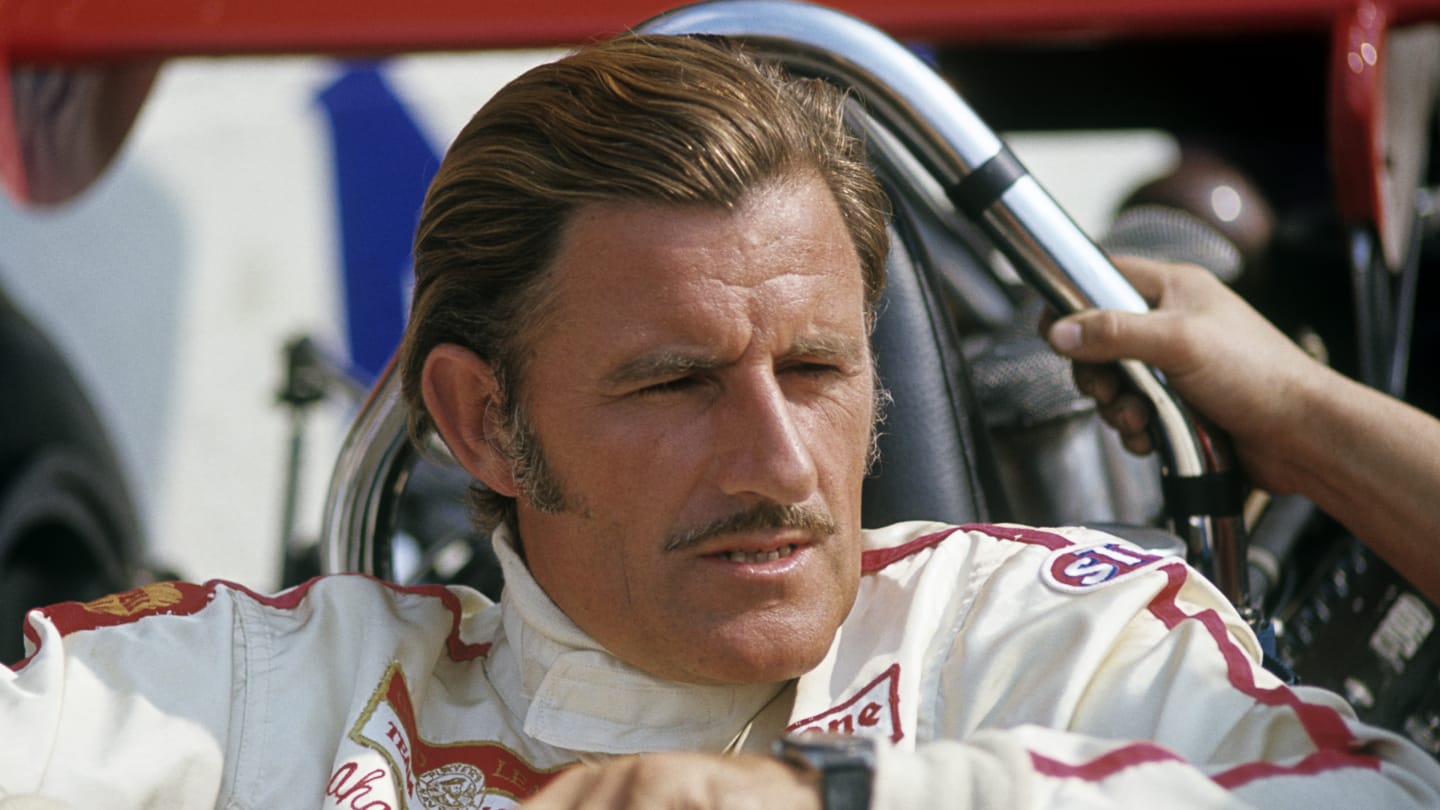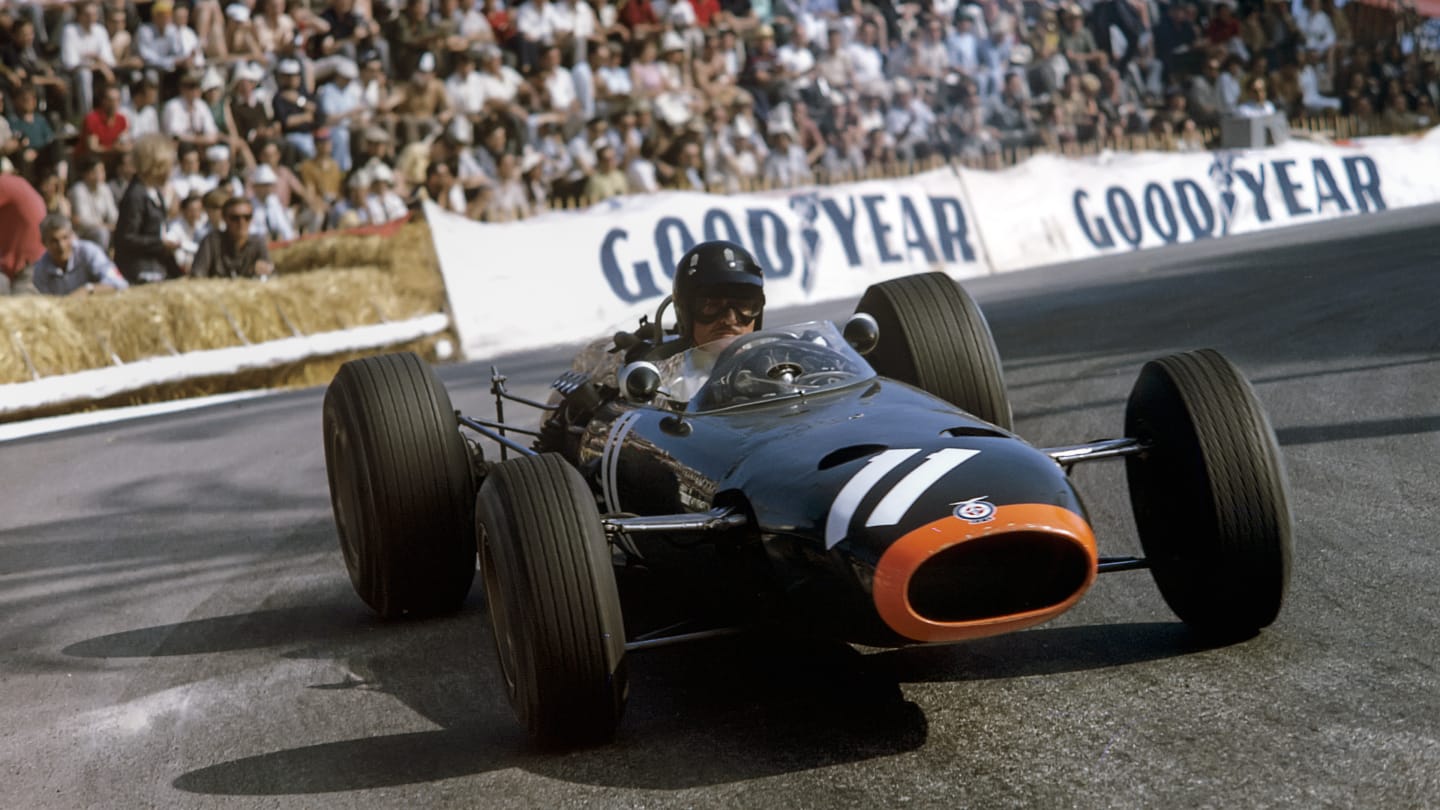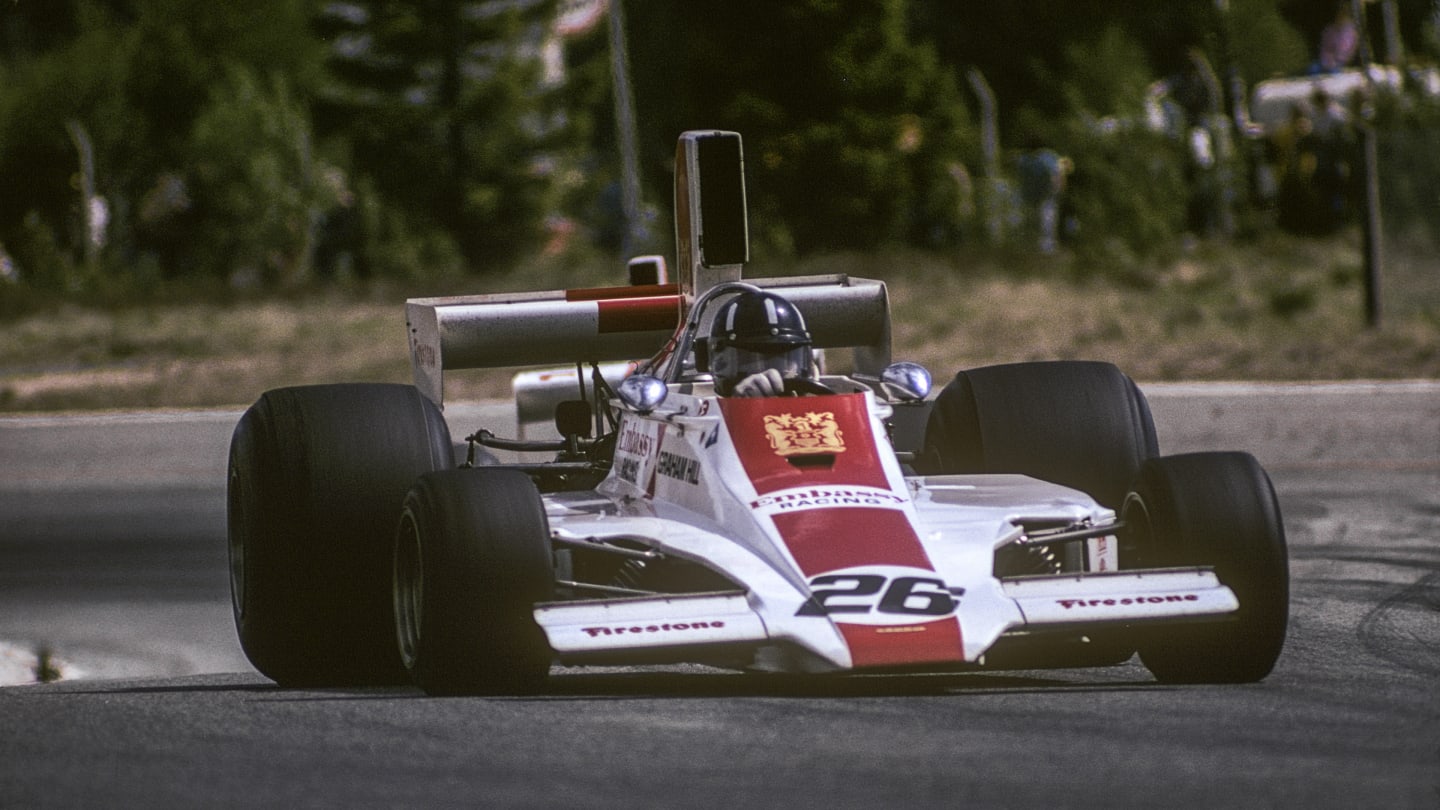
HALL OF FAME - 1962, 1968
Graham Hill

Graham Hill's iron-willed determination, fierce pride and great courage enabled him to overcome the odds against more naturally gifted drivers. None of them was more popular with the public than the moustachioed extrovert with the quick wit, who loved the limelight, was a natural entertainer and became one of the first Formula 1 media stars. His fans remained loyal, even when he damaged his reputation by racing too long past his prime. Millions were shocked when he was killed, not in a racing car, but at the controls of his plane.
Norman Graham Hill was born in north London on February 15, 1929. He claimed he inherited his determination from his mother and his sense of humour from his father, a stock broker. Both qualities were required to endure the deprivations and dangers of life in wartime London, where Hill grew up during the Blitz. He played drums in a Boy Scout band, went to a technical school and at 16 became an apprentice for the Smith instrument company. He bought a motorcycle and on a foggy night crashed it into the back of a stopped car, suffering a broken thigh that permanently shortened his left leg. In 1952 he joined the London Rowing Club, took to the sport like a duck to water and would later wear the club's insignia (eight vertical stripes representing oars) on his racing helmet. Before that, however, he had to wear a Royal Navy uniform, in which he felt like a fish out of water. He resented the compulsory nautical service and as a sign of protest deliberately contravened naval regulations by cultivating the neatly trimmed moustache that would become his trademark.

Hill in the BRM P261 at the 1966 Monaco Grand Prix
In 1953, on a whim, he tried a few laps around Brands Hatch in a F3 car and was "immediately bitten by the racing bug." His desire to scratch the itch was hampered by two problems: he hardly knew how to drive even a road car and could scarcely afford to fund a racing habit. He bought a rattletrap 1934 Morris, taught himself how to drive and got a license to drive on public roads. He quit his job at Smith's, collected unemployment insurance and talked his way into a job as a mechanic at a racing school, where he soon became an instructor. He competed in a couple of races and met Colin Chapman, then in the early stages of developing his Lotus cars. After persuading Chapman to give him a part-time job (at one pound per day) Hill soon became a full time Lotus employee, and was rewarded with the occasional race.
In 1958 Chapman decided Team Lotus was ready for the big time and Graham Hill became a Formula 1 driver. However, the Lotus was both slow and unreliable and when little improvement came in 1959, the ever-ambitious Hill switched to BRM for 1960. This seemed like a bad career move because in its decade of existence the beleaguered British Racing Motors Formula 1 effort had started slowly then tapered off.
But Hill pitched into the depressed team and proceeded to haul it up by its bootstraps, leading by example, working hard and deliberately affecting an optimistic outlook that boosted morale and produced ever-improving results. In 1962 he won in Holland, Germany, Italy and South Africa to collect a World Championship he fully deserved. As well as establishing himself as a driver of the top rank he was also a frontrunner in terms of public acclaim.
The dashing driver with the roguish moustache, naughty wink and quick wit blossomed as a media hero and greatly enjoyed his notoriety. He became famous for such antics as dancing on table tops, enlivening parties by performing bump and grind striptease acts and, once, streaking naked around a swimming pool. He flirted outrageously with women, to the chagrin of his long-suffering wife Bette, mother of their two daughters and a son named Damon who one day would also become a champion. As if the dangers of racing weren't enough Hill bought a plane and became the carefree, sometimes careless, pilot of 'Hillarious Airways.'
Yet behind the scenes Hill had a fierce temper and was prone to vicious black moods, in the grip of which he would inflict severe tongue lashings on all and sundry. These outbursts became more frequent as BRM progressively fell off the pace. Though he did manage to win America's Indianapolis 500 in 1966, Hill decided his Formula 1 fortunes could only be improved by going back to where he started.

Hill shares the podium with Brian Redman (left) and Denny Hulme (right) at the 1968 Spanish Grand Prix
In 1967 he re-joined Team Lotus where Jim Clark was at the peak of his powers. Early in 1968 the great Scot was killed and Hill found himself leading a distraught team that was further devastated by the death of Mike Spence at Indianapolis. Colin Chapman marvelled at the way Hill so brilliantly responded to the challenge. Others acclaimed Hill's bravery in trying so hard in Lotus cars that were notoriously fragile. He persevered and won in Spain, Monaco, and Mexico, to secure his second driving title.
In 1969 he won Monaco for a record fifth time, though the distinction of becoming 'Mr. Monaco' was followed by a downward spiral precipitated by a huge accident in the last race of the season, the US Grand Prix. When Hill's Lotus spun and stalled, he got out, push-started it and resumed driving without fastening his seat belts. A tyre suddenly deflated, pitching the Lotus into a bank and throwing Hill out, breaking his right knee and badly dislocating the left. He recovered and continued racing but was never the same driver again.

Hill at the wheel of the Lola-Ford T370 at the 1974 German Grand Prix
A season with Rob Walker (in a Lotus) and two years with Brabham were undistinguished. However, a victory in a Matra (with Henri Pescarolo) in the 1972 Le Mans race made him the only driver to win motorsport's Triple Crown: Le Mans, Monaco and the Indy 500. Though history shows he should have stopped at this point, Hill's pride pushed him on.
In 1973 he set up his own Formula 1 team, but Embassy Hill Racing and its famous driver were embarrassingly off the pace. Finally, following the humility of failing to qualify for the 1975 Monaco Grand Prix, Hill announced he was retiring as a driver but would continue to run the team led by his highly talented discovery, Tony Brise. A few months later Hill, Brise and four other team members were dead.
On November 29, 1975, returning from a test session at the Paul Ricard circuit in France, Hill was trying to land in dense fog at the Elstree airfield near London when his twin-engined plane crashed and burned, killing all aboard.
Text - Gerald Donaldson